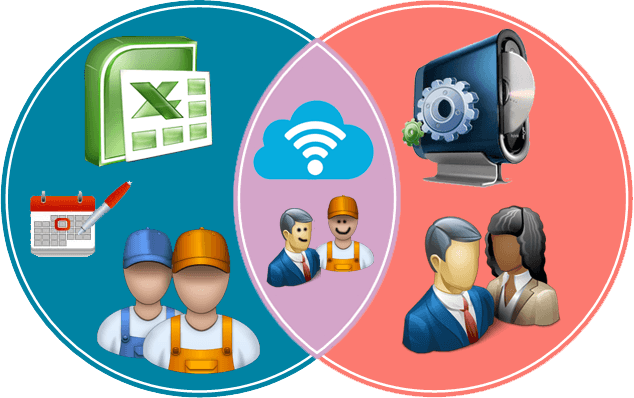The Mobile Schedule Shift
There are two definitions that may come to mind when you first consider employee scheduling. Either it is the time-consuming process of organizing employee shifts on a piece of paper or in an excel spreadsheet or it is a highly sophisticated and automated software, that’s usually difficult to use or implement inside of a large organization. But is there anything that captures the space in-between?
The Extinct Employee Scheduling Process
It is only recently that algorithm based solutions are becoming commonplace; in the past determining who, when and where someone works was usually done by a manager slotting each employee into shifts on a piece of paper. Though this outdated method is not suitable for large competitive companies moving at a fast pace, manual methods of scheduling present a simple solution to an extensive problem for many of you. However, simple solutions are not always the best solution.
With a paper or Excel method of employee scheduling, the manager creates a fixed schedule that employees don’t always have the power to change. If an employee has a conflicting priority or suddenly gets sick, finding a replacement can mean hours of wasted time for both the employee and manager involved in reaching out to other staff.
The Soon-to-be Extinct Employee Scheduling Process
Automated employee scheduling software is a solution to these archaic methods that are still lingering on in modern business environments. Automation not only frees up manager time, but can take into account much more data than a person can remember. This includes historical customer patterns, weather, and current promotions being offered.
The concept is supposed to result in a win-win situation for both the employees and the company’s bottom line. Ideally, staff will spend less time either with nothing to do or being completely overwhelmed with long lines, while the business benefits from increased sales due to proper coverage and reduced cost from no longer overstaffing.
So, automated software sounds like a solution to all your employee scheduling problems? Not so fast.
On Aug.14 this year, a New York Times story told an employee’s account of problems with Starbucks’ current employee scheduling software, which is tailored and built specifically for their company. After the article was published, Starbucks promised to change their scheduling process and give managers more control once again.
Starbucks’ experience is common among a number of retailers who have taken their desire to engineer and optimize schedules too far. As soon as a computer is scheduling your people at 15-minute increments to match the peaks and valleys of customer demand, an employee’s desire to live a normal, predictable life becomes a barrier to profitability.
The Already Arrived Future of Employee Scheduling
As a result of the Starbucks coverage and the number of similar employee accounts that have been written about since, there is an increasing deal of pressure on organizations to find a balance that will satisfy both their staff and stakeholder obligations. We are beginning to see a shift that will disrupt the current way many companies are managing their employee scheduling.
Deborah Sweeney, CEO of MyCorporation.com gets it right in a recent Huffington Post blog contribution when she observes “I have heard enough horror stories to know that automatic scheduling software should be used first for the benefit of your staff. When you look at software suites, choose one that gives your employees some

control.” After all, happy employees mean reduced turnover and a willingness to deliver high quality customer service that creates satisfied, repeat customers… both of which benefit a business’ bottom line.
Open shift scheduling is one solution to achieving this balance. Stores can receive shift templates from upper management that outline hours based on historical demand at each specific location. That satisfies the business side of things by ensuring proper floor coverage during peak periods to maximize sales and reduced coverage during slow times to minimize labor costs. Employees are then able to “build their own schedules” by selecting the shifts they would be happiest working. We have found that this allows for a healthy compromise and satisfies the goals of both parties.
How is your organization finding a balance between complete schedule automation and employee satisfaction?





